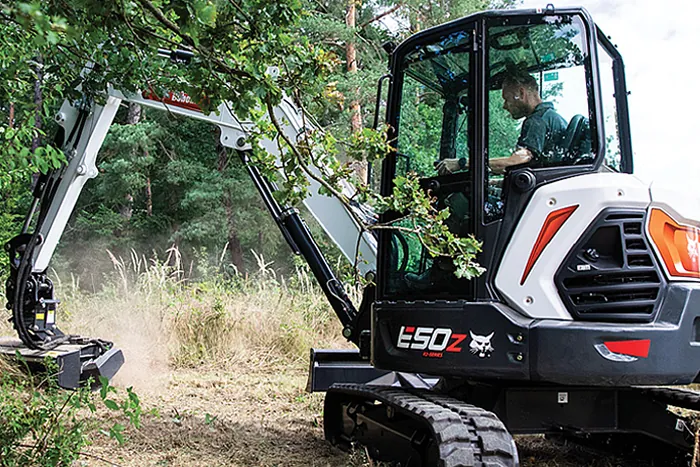Optimizing Compact Excavator Performance: Essential Tips for Safe and Efficient Lifting

Optimizing the performance of a compact excavator for safe and efficient lifting involves a combination of proper machine selection, maintenance, operator training, and adherence to safety protocols. Here are essential tips to achieve this:
1. Select the Right Excavator
Match the Machine to the Task: Choose an excavator with the appropriate lifting capacity for the job. Check the manufacturer's lifting charts for details on the capabilities at different boom and arm positions.
Consider attachments: Ensure the machine is compatible with any attachments you'll be using, such as buckets, grapples, or lifting hooks, and that these attachments don't exceed the excavator's capacity.
2. Regular Maintenance
Scheduled Inspections: Conduct regular inspections of the excavator, focusing on hydraulic systems, tracks, and the undercarriage to ensure there are no leaks, wear, or damage that could impact lifting performance.
Fluid Levels: Maintain proper levels of hydraulic fluid, engine oil, and coolant to ensure optimal machine performance.
Component Checks: Regularly check the condition of lifting hooks, shackles, and other lifting accessories.
3. Operator Training
Certification and Training: Ensure operators are certified and have received adequate training on the specific model of the excavator they will be using.
Understand Lifting Charts: Train operators to read and understand the excavator's lifting charts and the impact of boom and arm positions on lifting capacity.
4. Safe Lifting Practices
Stabilize the Machine: Use outriggers or blade for additional stability. Always work on firm, level ground to prevent tipping.
Monitor load capacity: Never exceed the rated lift capacity of the excavator. Factor in the weight of attachments and materials being lifted.
Use Proper Rigging: Ensure all rigging gear, such as slings, chains, and hooks, are in good condition and properly rated for the load.
Even Distribution: Ensure the load is evenly distributed and balanced to avoid uneven stress on the excavator.
5. Operational Techniques
Smooth Movements: Use smooth and controlled movements when lifting and placing loads to avoid sudden shifts that could destabilize the excavator.
Proper Positioning: Position the excavator close to the load to minimize boom extension, which reduces lifting capacity. Keep the load as close to the ground as possible during transport.
Communication: Maintain clear communication with ground workers using hand signals or radios to ensure everyone is aware of movements and can respond quickly in case of emergencies.
6. Safety Measures
Load Indicators: Use load indicators or moment limiters if available, which provide real-time feedback on the load being lifted.
Avoid Overhead Hazards: Be aware of overhead power lines and other obstacles that could pose a risk during lifting operations.
Emergency Procedures: Have a clear plan in place for emergencies, including equipment failures or accidents. Ensure all operators and ground crew are familiar with these procedures.
7. Environmental Considerations
Weather Conditions: Be mindful of weather conditions such as wind, rain, or snow, which can impact visibility and ground stability.
Noise and Dust Control: Implement measures to control dust and noise, particularly in urban or residential areas, to ensure safety and compliance with local regulations.
Why Choose SAIVS™ as Your Supplier?
Committed to innovation and customer needs, SAIVS specializes in high-quality machinery components for diverse industries like construction, mining, and agriculture. They offer a wide range of parts, including undercarriage components for popular brands, ensuring optimal performance and durability. values customer satisfaction, providing competitive prices, fast shipping, and exceptional service to keep your operations running smoothly.